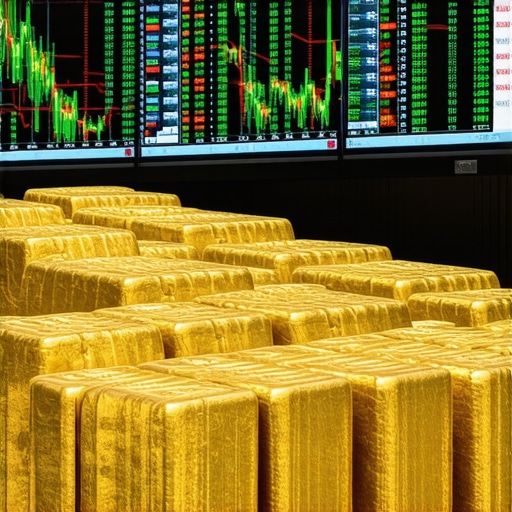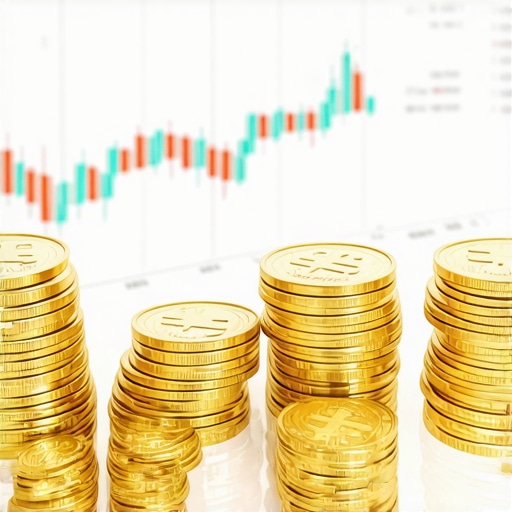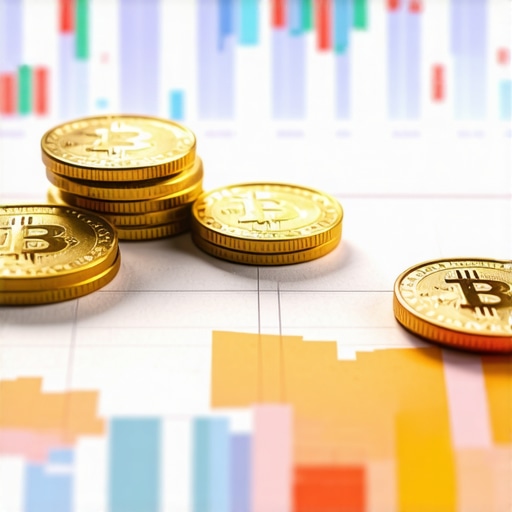Understanding the Nexus Between Global Economic Dynamics and Gold Pricing in 2025
As seasoned analysts recognize, gold remains a quintessential safe-haven asset, especially amidst the volatile macroeconomic landscape projected for 2025. The intricate interplay of global economic factors—ranging from geopolitical tensions to monetary policies—continues to shape the trajectory of gold prices. This article explores these complex drivers through an expert lens, providing nuanced insights into future market behavior.
Macroeconomic Indicators and Their Influence on Gold Demand
Key macroeconomic indicators such as inflation rates, currency stability, and interest rate trends serve as pivotal catalysts for gold price fluctuations. Historically, inflationary pressures have bolstered gold’s appeal as an inflation hedge, a trend likely to persist in 2025 amid ongoing monetary policy adjustments by the Federal Reserve and other central banks. Analyzing the latest gold price trend predictions reveals a cautious optimism driven by inflation concerns and geopolitical uncertainties.
Geopolitical Tensions and Currency Fluctuations
Geopolitical instability, including trade disputes and regional conflicts, tends to elevate gold’s safe-haven status. Simultaneously, fluctuations in major currencies—especially the US dollar—directly influence gold’s international pricing. A weakening dollar typically elevates gold prices, as observed during recent market episodes. The evolving landscape of global diplomacy and trade agreements in 2025 will further modulate these dynamics, demanding a keen understanding of international relations’ impact on commodity markets.
Central Bank Gold Purchases and Policy Shifts
Central banks’ gold reserve policies are crucial in the 2025 context. Recent trends indicate increased accumulation by nations seeking to diversify reserves away from volatile fiat currencies. The white paper on central bank gold policies underscores how such strategic moves can underpin bullish sentiments in gold markets, especially amid global economic uncertainties.
What Are the Complex Interactions Between Inflation Expectations and Gold Market Sentiment in 2025?
This question embodies the core challenge for investors and analysts: deciphering how inflation expectations, driven by fiscal policies and supply chain disruptions, will influence gold’s safe-haven demand. The nuanced relationship requires integrating macroeconomic forecasts with real-time market sentiment indicators, such as investor positioning and geopolitical risk assessments.
For a deeper understanding of strategic gold investments, explore our comprehensive guide on safely buying gold. Engaging with expert analyses can empower investors to navigate the complex landscape of 2025’s gold market with confidence.
Sources such as the IMF white paper provide authoritative insights into how macroeconomic policies influence gold’s role as a reserve asset. Staying informed about these evolving factors is essential for making strategic investment decisions in the upcoming year.
Deciphering the Interplay of Geopolitical Risks and Gold Valuations in 2025
As geopolitical tensions escalate in various regions, market participants are increasingly viewing gold as a strategic hedge against political instability and regional conflicts. For instance, ongoing trade disputes and regional unrest can trigger surges in demand, pushing gold prices higher. The influence of international diplomacy and trade negotiations becomes even more pronounced, requiring investors to stay vigilant about evolving geopolitical scenarios. To deepen your understanding of how these factors interplay, consider exploring our comprehensive market analysis for 2025.
How Do Global Currency Fluctuations Shape Gold’s Price Trajectory?
Currency stability, especially that of the US dollar, remains a vital component influencing gold prices. Historically, a weakening dollar tends to elevate gold’s appeal, as it becomes cheaper for international investors. Conversely, a robust dollar can suppress gold demand. This dynamic is compounded by central bank reserve strategies, which are increasingly favoring gold accumulation as a safeguard against fiat currency volatility. For an in-depth exploration of these reserve shifts, refer to our white paper on central bank gold policies.
Expert Level Question: What Are the Implications of Rising Inflation Expectations for Gold’s Role as a Safe-Haven Asset in 2025?
This question challenges investors and analysts to critically evaluate how inflation forecasts—shaped by fiscal policies, supply chain disruptions, and monetary interventions—will influence gold’s safe-haven status. A nuanced understanding requires integrating macroeconomic predictions with real-time market sentiment, including investor positioning and geopolitical risk factors. The evolving complexity underscores the importance of advanced analytical tools, such as gold futures technical analysis, which can be explored further in our guide to gold futures analysis.
If you’re interested in practical strategies for navigating these intricate market forces, our top gold investment strategies for 2025 offer valuable insights. Staying ahead of the curve involves continuous learning and strategic planning, especially in a landscape shaped by rapid economic and geopolitical shifts.
According to the IMF white paper, central banks’ increasing gold reserves signal a collective move toward stability amidst global uncertainties, reinforcing gold’s position as a vital reserve asset in 2025. Engaging with authoritative sources and expert analyses will be crucial for investors aiming to optimize their portfolios in this dynamic environment.
Unpacking the Impact of Macroeconomic Shifts on Gold in 2025
As the global economy navigates through unprecedented uncertainties, the role of macroeconomic fundamentals becomes increasingly pivotal in shaping gold’s trajectory. Factors such as inflation expectations, interest rate policies, and currency fluctuations are intertwined in complex feedback loops that require sophisticated analysis. For instance, a persistent rise in inflation—even if moderated—can reinforce gold’s appeal as an inflation hedge, prompting central banks and institutional investors to adjust their reserves accordingly. According to the IMF white paper on reserves, central banks are actively diversifying holdings, which underscores the strategic importance of gold in maintaining financial stability amid geopolitical and economic volatility.
How Geopolitical Tensions and Currency Dynamics Forge Gold’s Price Pathways
In 2025, geopolitical tensions continue to serve as a catalyst for gold’s safe-haven demand. Conflicts, trade disputes, and diplomatic standoffs create an environment where gold’s intrinsic value as a crisis hedge becomes increasingly attractive. Additionally, currency fluctuations—particularly the US dollar—play a critical role. When the dollar weakens against major currencies, gold’s international price tends to surge, reflecting its status as a global reserve asset. This relationship is further complicated by central banks’ strategic shifts toward gold accumulation, as detailed in the white paper on central bank policies, which indicates a collective move to safeguard reserves against fiat currency risks.
Expert-Level Insights: The Interplay of Inflation Expectations and Market Sentiment
What are the nuanced implications of rising inflation expectations for gold’s safe-haven status in 2025?
Addressing this question involves analyzing not just macroeconomic forecasts but also investor sentiment, market positioning, and geopolitical risk assessments. Rising inflation expectations, driven by expansive fiscal policies and supply chain disruptions, tend to elevate gold demand, especially when accompanied by uncertainty in equity and bond markets. Advanced analytical tools, such as gold futures technical analysis and sentiment indicators, can provide deeper insights into short-term price movements. For example, monitoring open interest in gold futures contracts can reveal shifts in institutional investor confidence, offering predictive signals for market participants.
For more strategic insights, consider our comprehensive guide on gold futures technical analysis. Incorporating these sophisticated tools into your investment strategy can enhance decision-making precision amid rapidly evolving market conditions.
Staying ahead also involves engaging with authoritative sources like the IMF white paper, which emphasizes the strategic importance of gold reserves in global economic stability. Expert analyses and real-time market data are invaluable for navigating the intricacies of 2025’s gold landscape, enabling investors to optimize their portfolios effectively.
Visualizing the Future: The Role of Geopolitical and Economic Interplay in Gold Valuations
Understanding the multifaceted influences on gold prices in 2025 requires a holistic view of geopolitical developments and macroeconomic signals. As regional conflicts escalate and diplomatic negotiations unfold, gold’s role as a hedge becomes more prominent. The integration of real-time geopolitical risk assessments with macroeconomic indicators can be achieved through advanced market analysis tools, which empower investors to anticipate shifts before they materialize. For a detailed exploration, visit our comprehensive market analysis for 2025.
Unraveling the Layered Impact of Fiscal Policies on Gold’s Safe-Haven Status in 2025
As the global economic landscape evolves, the intricate relationship between fiscal stimulus measures, monetary tightening, and gold’s role as a hedge becomes increasingly complex. Advanced investors must analyze not only macroeconomic indicators but also the subtle signaling embedded in central bank communications and policy shifts. For instance, an unexpected shift toward quantitative easing by major economies could trigger a reassessment of gold’s valuation, emphasizing the importance of real-time policy monitoring.
How Emerging Market Dynamics Are Reshaping Gold Demand Strategies
Emerging economies, driven by rapid infrastructural development and urbanization, are increasingly adopting gold not just as a reserve asset but also as a medium of wealth transfer and cultural investment. Countries like India and China are innovating in digital gold platforms, integrating blockchain technology to facilitate transparent transactions. These developments influence global supply chains and demand elasticity, requiring analysts to incorporate socio-economic trends into their forecasts. Exploring these nuances can uncover new investment opportunities in the gold sector’s evolving landscape.
What Are the Long-term Implications of Central Bank Diversification in Gold Reserves?
Central banks are strategically diversifying away from traditional fiat currency reserves, with some accumulating gold at rates unseen in recent decades. This shift signifies a collective move towards reserve asset diversification amid declining trust in fiat currencies and geopolitical uncertainties. The implications extend beyond reserve management, potentially affecting global liquidity and currency stability. For an authoritative perspective, refer to the detailed analysis provided in the World Bank report on reserve diversification.
How does the interplay between geopolitical risk and currency devaluation influence gold’s pricing volatility?
This question probes the core of advanced market analysis, where geopolitical tensions—ranging from trade wars to regional conflicts—directly impact currency stability, subsequently affecting gold prices. A devalued currency often triggers a surge in gold demand as an alternative store of value. Sophisticated models incorporate geopolitical risk indices, currency volatility metrics, and market sentiment indicators to predict short-term price fluctuations. To master these analytical techniques, investors should explore our comprehensive guide to advanced gold market analysis tools.
Expert Insights & Advanced Considerations
1. Geopolitical Stability as a Catalyst for Gold Demand
Geopolitical tensions remain a primary driver influencing gold prices in 2025. Investors should monitor regional conflicts and diplomatic developments, as escalations often trigger safe-haven buying, reinforcing gold’s role as a strategic asset.
2. Central Bank Diversification and Reserve Policies
Central banks worldwide are expanding their gold reserves, diversifying away from volatile fiat currencies. This trend supports a bullish outlook for gold, emphasizing the importance of tracking reserve shifts through authoritative sources like the World Bank report on reserve diversification.
3. Inflation Expectations and Real Asset Allocation
Rising inflation forecasts necessitate a reevaluation of portfolio strategies. Gold continues to serve as a critical hedge, especially when combined with other real assets like commodities and tangible investments, to mitigate inflation risks effectively.
4. Currency Fluctuations and International Trade Dynamics
The US dollar’s performance remains pivotal. A weakening dollar tends to elevate gold prices, making currency stability a key factor for investors positioning for 2025. Insights from the central bank gold policies white paper provide valuable context for reserve management strategies.
5. Technological Innovations in Gold Investment
Emerging digital gold platforms and blockchain integration are transforming gold investing, offering transparency and accessibility. Engaging with these technological advancements can optimize investment portfolios in the evolving landscape of 2025.
Curated Expert Resources
- IMF White Paper on Gold Reserves: Offers comprehensive insights into macroeconomic influences on gold holdings and international reserve strategies.
- World Bank Report on Reserve Diversification: Analyzes global central bank reserve strategies and their implications for gold demand.
- Buying Gold Now’s Market Analysis for 2025: Provides expert-driven forecasts and strategic considerations tailored for investors navigating the complex gold market environment.
- Advanced Gold Futures Technical Analysis Guide: Equips investors with sophisticated tools to interpret price movements and market sentiment effectively.
- Effective Gold Trading Strategies: Offers actionable tactics to maximize returns amid volatility and economic shifts in 2025.
Final Expert Perspective
In 2025, gold continues to stand at the crossroads of geopolitical stability, macroeconomic policy, and technological innovation. Its role as a hedge against inflation and currency fluctuations underscores its strategic importance for sophisticated investors. Staying informed through authoritative resources and leveraging advanced analytical tools will be crucial for those aiming to optimize their gold investments. Deepen your expertise by engaging with these insights and exploring tailored strategies—your future wealth preservation depends on it.










